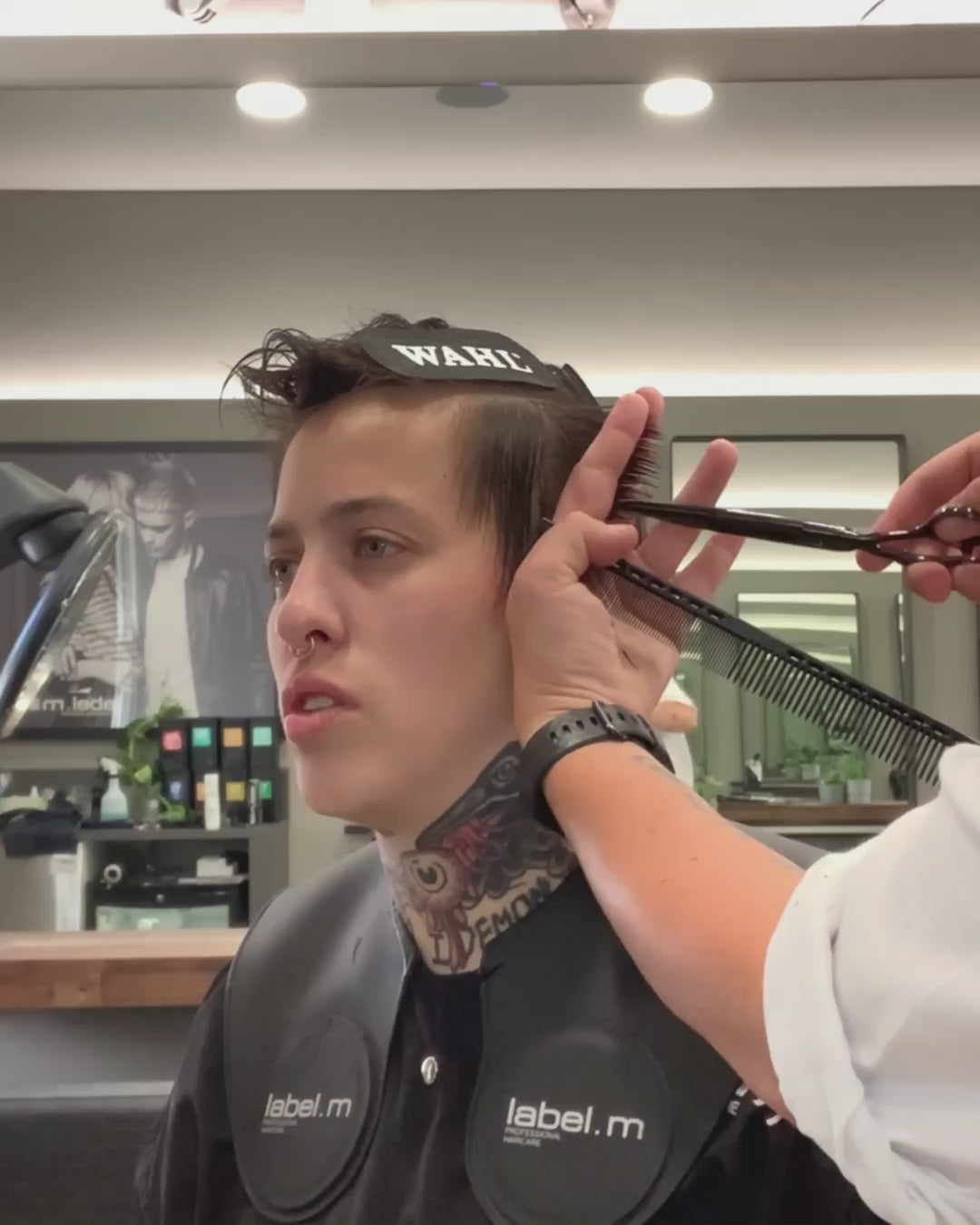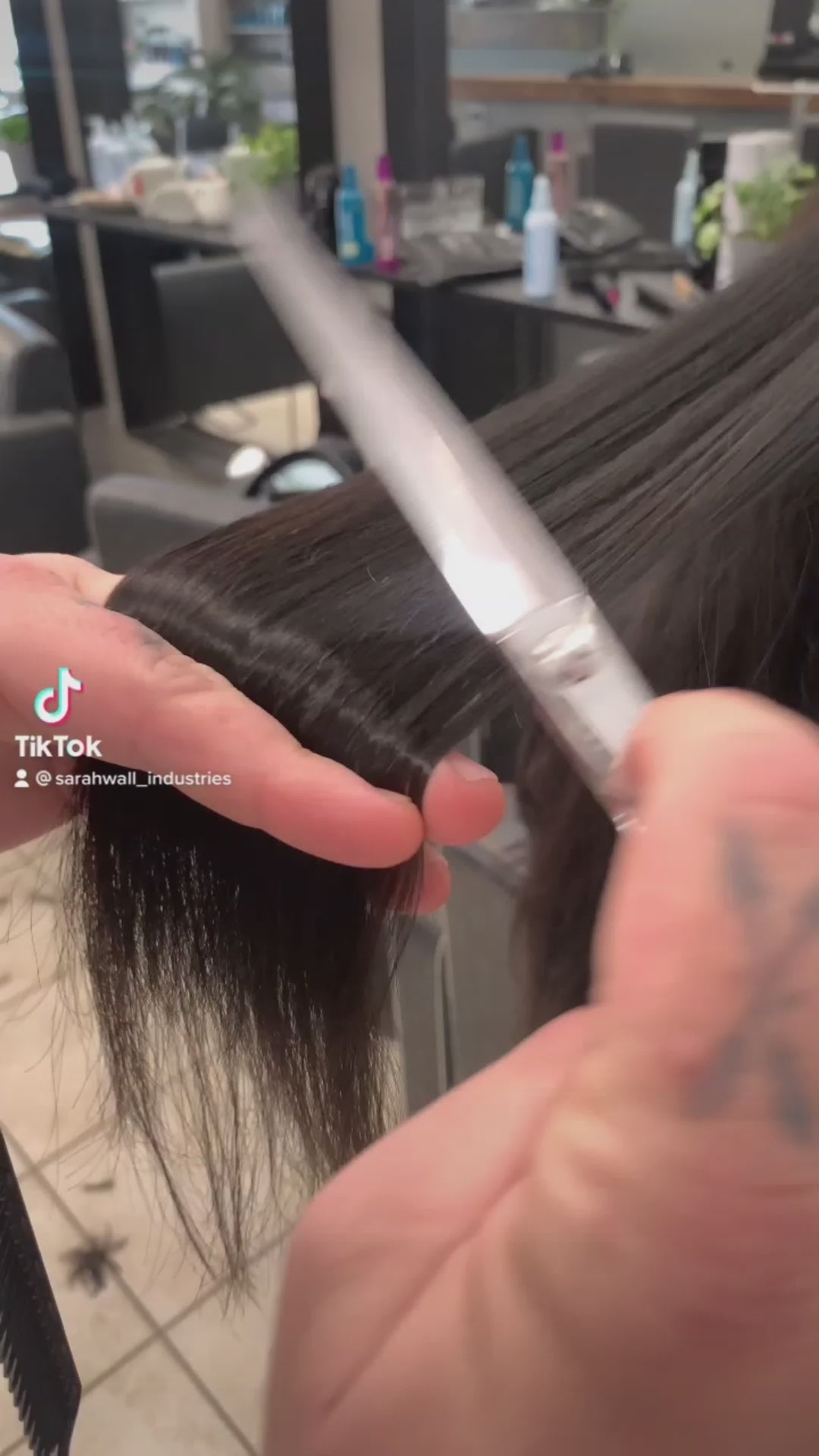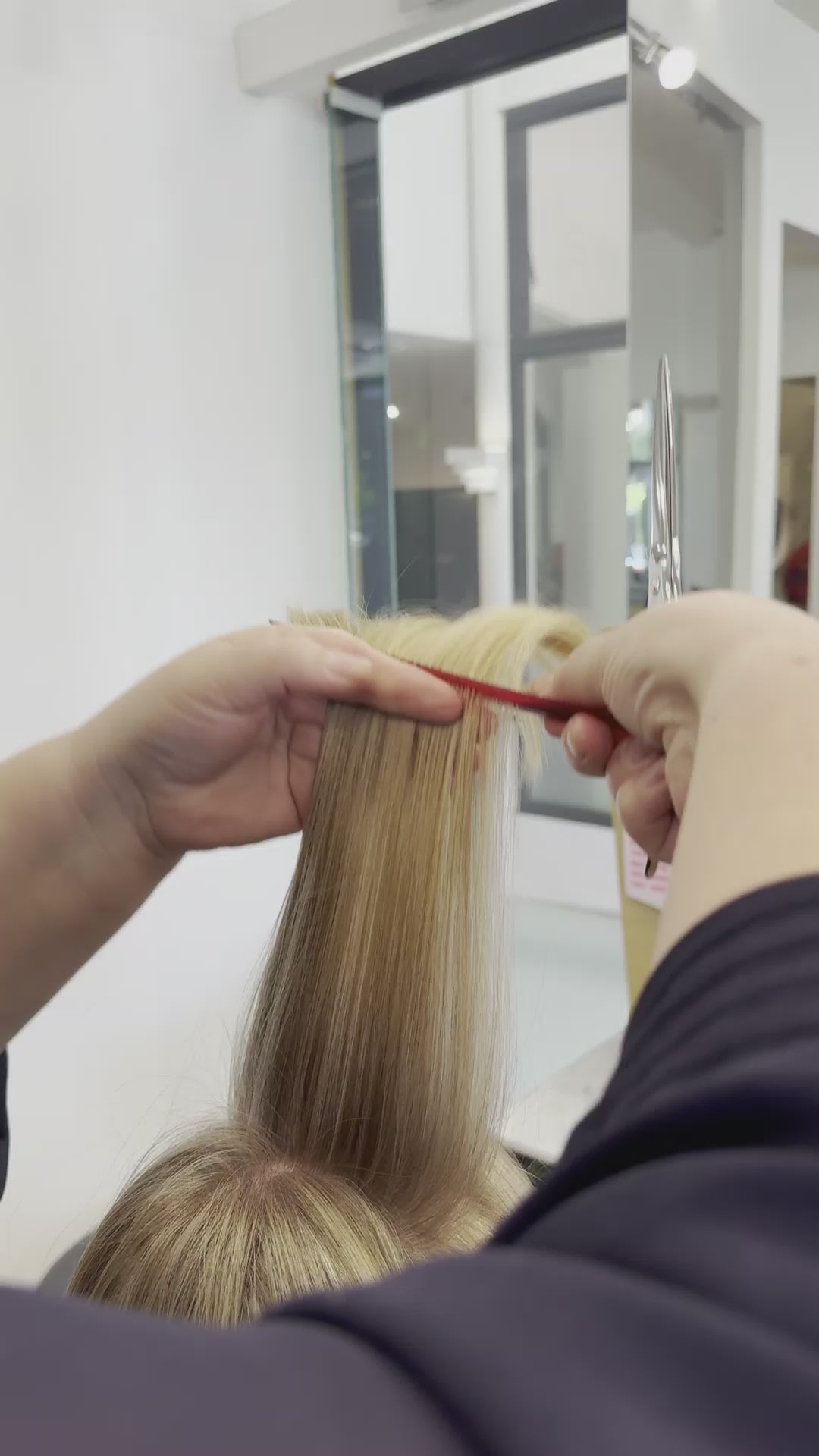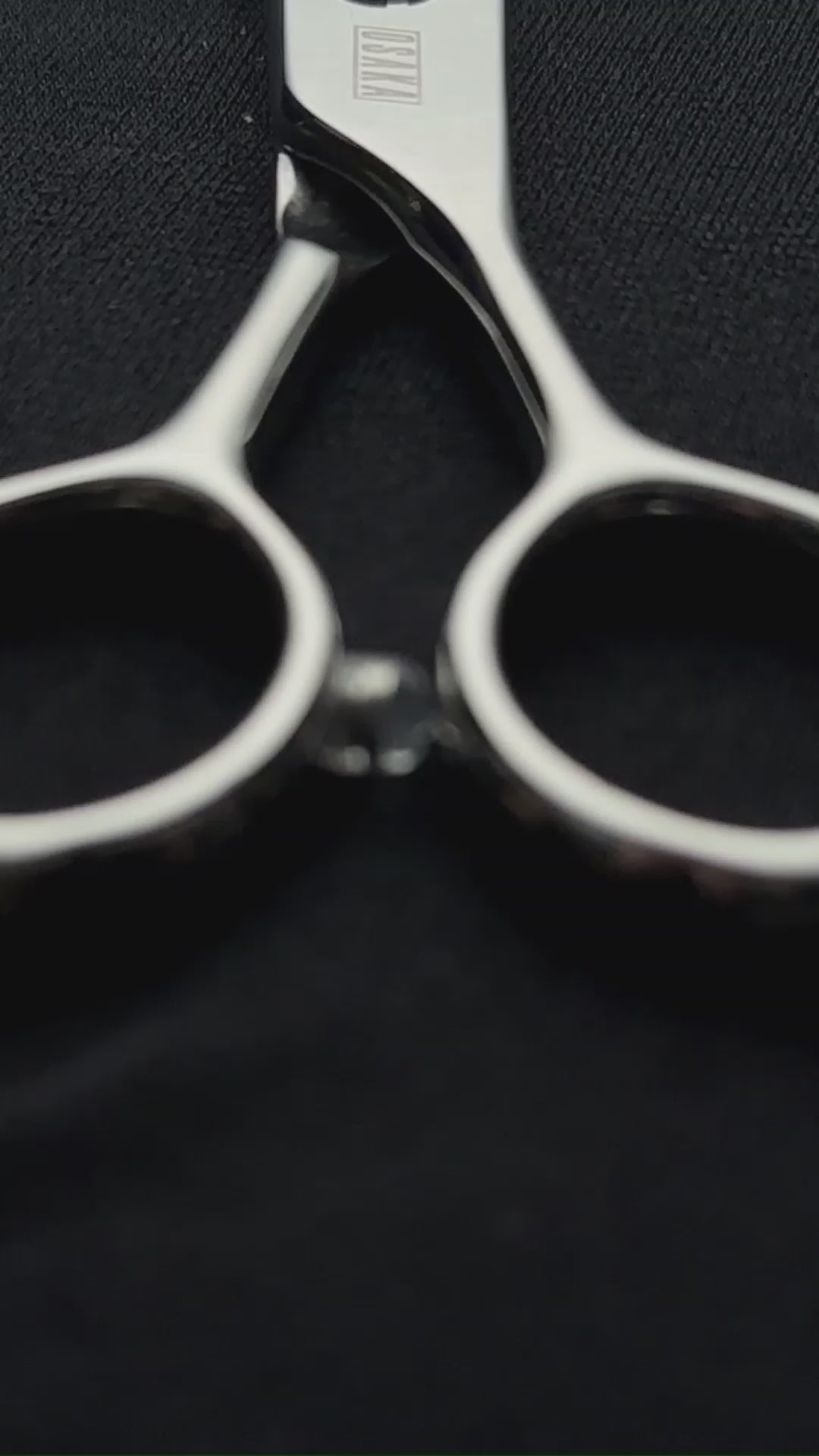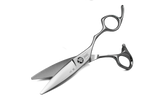How Do Left-handed Scissors Differ from Right-handed Ones?
You're halfway through a layered cut when your blades start binding and the cutting line completely disappears. After just one hour, your wrist is already throbbing, and achieving the precision your clients deserve feels impossible. If you're a left-handed stylist fighting with regular scissors, trust us, you're not alone. The good news? You absolutely don't need to accept subpar results. Right-handed and left-handed scissors have crucial differences that extend far beyond comfort, seriously affecting your accuracy and career longevity.

Stop Accepting Subpar Results: The Reality Most Stylists Won't Admit
The hairdressing industry has a dirty secret: approximately 10-15% of professional stylists are fighting an uphill battle every single day. Research from the International Journal on Robotics, Automation and Sciences reveals that most scissors are designed exclusively for right-handed users, creating significant accessibility challenges for left-handed professionals.
This isn't about preference—it's about physics. Manufacturing economics favour right-handed designs, leaving left-handed professionals with limited options that compromise their work quality.
The Visibility Problem Every Left-Handed Stylist Knows
When left-handed stylists use right-handed scissors, the upper blade blocks their cutting line completely. Here’s the truth: the blade positioning that works perfectly for right-handed users creates a visual barrier, thus preventing you from seeing exactly where you're cutting.
Studies show that even people with the same hand dominance grip scissors differently, creating unique pressure patterns across fingers and palms. This variation affects cutting precision and leads to uneven results that frustrated stylists often blame on technique rather than tools.
When Blades Fight Against Your Natural Movement
Left-handed stylists using right-handed scissors face a problem called blade separation. Your natural hand movements create sideways forces that push the blades apart instead of keeping them properly tensioned. This happens because right-handed scissors are built specifically for how right-handed people cut, not for their natural left-handed motions.
The research emphasises that "the use of scissors requires simultaneous application of strength and dexterity." When tools fight against natural movement patterns, both become compromised, making even simple cuts unnecessarily challenging.
Why Your Current Technique Isn't the Problem (It's Your Tools)
Many talented left-handed professionals assume they need to improve their technique when the real issue lies in their tools. Advanced research in cutting tool design reveals the sophisticated engineering required for proper scissor construction.
Studies published in the Journal of Computational Design and Engineering demonstrate that "the prediction of tool remaining useful life is crucial for ensuring quality and reliability of components in high-end equipment." This research shows that cutting tools require precise engineering to maintain performance over time.
Blade Orientation: More Than Just a Mirror Image
True left-handed scissors aren't simply right-handed scissors flipped around. Blade orientation requires complete reversal—a "mirror image" design where the left blade sits on top when held in the left hand. This positioning ensures optimal cutting visibility and blade compression.
Engineering research reveals that proper blade geometry affects "cutting performance, cut after cut." When blade orientation doesn't match hand dominance, tool effectiveness diminishes significantly, leading to inconsistent results and increased strain.
The Biomechanics of Cutting: Why Hand Dominance Matters
Hand dominance determines the direction of natural cutting forces. Research into cutting tool mechanics shows that "different materials have different physical demands, which impose different strains on the user."
When hand dominance and tool design align properly, users experience "optimal control without unnecessary features that can get in the way." This alignment is crucial for professionals performing thousands of cutting motions daily.
The Career-Ending Mistake That Left-Handed Scissors Prevent
The wrong scissors will sabotage your career in ways that get progressively worse. Your precision suffers, clients start noticing subpar cuts, and you're setting yourself up for painful repetitive strain injuries down the road.
Precision Cutting: When Every Millimetre Counts
Professional hairdressing demands millimetre precision. When you can't see cutting lines clearly or blades separate under normal pressure, achieving consistent precision becomes nearly impossible. This affects client retention, professional reputation, and earning potential.
Client Experience: Smooth Cuts vs. Hair Damage
Using the wrong scissors causes unsightly hair damage. When blades lose tension or you compensate for blocked visibility, you end up crushing hair cuticles. This creates frizz and damage that clients will definitely notice within days.
Long-term Career Health: Preventing Repetitive Strain Injuries
Using incorrect scissors poses serious health risks. Research published in Applied Sciences examining muscle fatigue provides compelling evidence about the physical toll of improper tools.
The study involving 20 participants used electromyographic analysis to measure muscle activity in the adductor pollicis muscle, key to scissor operation. Researchers found that proper tool design "significantly reduced muscle fatigue (95% confidence interval, 10.705 [4.523–19.751], p < 0.01)."
This demonstrates that when tools work with natural biomechanics rather than against them, muscle fatigue decreases significantly. The study measured substantial reductions in muscle activity when using properly designed tools, validating what left-handed stylists experience daily—fighting tools leads to unnecessary fatigue and potential injury.
How to Never Get Fooled by "Universal" Scissors Marketing Again
The scissors market overflows with misleading claims about "ambidextrous" designs. Understanding differences between true left-handed scissors and marketing gimmicks protects your investment and performance.
True Left-Handed vs. Semi Left-Handed: Understanding the Difference
"Semi left-handed" scissors reverse only the handle design while maintaining right-handed blade orientation. These might feel comfortable, but don't solve fundamental problems of visibility and blade mechanics.
True left-handed scissors require complete blade reversal, ensuring the left blade sits on top when held in the left hand, providing proper visibility and blade compression.
Japanese Steel Quality: The Ultimate Hair Stylist Advantage
Japanese steel maintains a cutting edge longer and provides smooth action that professional stylists require. At OSAKA, we source only the finest grades of Japanese steel, ensuring scissors maintain precision cut after cut.
Ergonomic Features That Actually Matter
True ergonomic design reduces fatigue and prevents injury. Look for offset handles aligning with natural positioning, finger rests supporting proper grip, and blade tension matching your style.
Why Elite Stylists Choose OSAKA (And You Should Too)
For over 30 years, OSAKA has partnered with stylists who refuse to compromise on quality. Our collaboration with PASSION Scissors brings decades of expertise to Australian professionals.
Our Left-Handed Specialists: 30+ Years of Understanding Your Needs
Through years of working with demanding professional stylists, we've learned exactly what quality cutting requires. While other companies treat left-handed scissors as afterthoughts, we specifically engineer our tools to meet left-handed professionals' unique needs. We believe in keeping things simple with elegant, functional designs that let our superior Japanese craftsmanship speak for itself.
From Apprentice to Master: Finding Your Perfect Fit
Whether beginning your career or established professionally, OSAKA offers left-handed options across our range. From Apprentice sets providing exceptional value to premium lines meeting top salon demands, we have perfect scissors for your journey.
Here’s How Osaka Turn Your Scissors Into a Profit Centre (Not an Expense)
Quality scissors are career investments. OSAKA provides complete support systems, maximising your investment.
Professional Sharpening Services: Maintaining Peak Performance
Our professional sharpening service keeps your OSAKA scissors performing like new. You'll get consistent, razor-sharp cuts that keep clients happy and protect the reputation you've worked so hard to build.
Essential Accessories for Left-Handed Professionals
We offer curated professional-grade accessories enhancing workflow—from ergonomic pouches protecting investments to precision combs complementing cutting techniques.
OSAKA's Lifetime Warranty: Your Long-term Partner
We stand behind craftsmanship with a comprehensive lifetime warranty on manufacturing defects, reflecting confidence in our products and commitment to your success.

Make That Professional Pivoting Experience Today
Explore OSAKA's Left-Handed Collection
The difference between struggling with inadequate tools and excelling with precision instruments is one decision away. OSAKA's left-handed collection represents decades of engineering expertise solving unique challenges faced by left-handed professionals.
Our scissors combine legendary Japanese steel with ergonomic design principles specifically developed for left-handed cutting biomechanics. Don't accept subpar results another day. Visit our collection and discover why Australia's elite stylists choose OSAKA. Experience the difference true left-handed design makes to cutting precision, client satisfaction, and career longevity.





